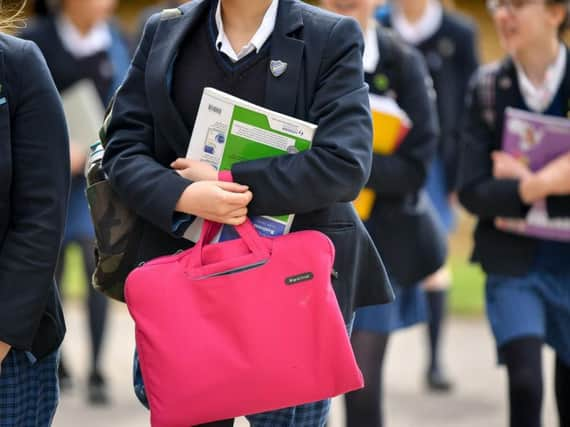School system unfair to households in areas with fewer options - study


Researchers say parents in these areas have to make "less ambitious" choices about where to send their children.
Analysis from the universities of Cambridge and Bristol looked at secondary school choices of households from across England, totalling 526,000 pupils.
Advertisement
Hide AdAdvertisement
Hide AdPublished in the Oxford Review of Education on Thursday, it indicates only 39% of parents choose their local school as their first option.
The research also found that more than a quarter (27% ) of parents make the maximum number of choices permitted, and so having more options may be beneficial.
Black or Asian families, or those with English as an Additional Language (EAL), make more use of the school choice system, according to the study.
It suggests 41% of white British households only make one choice, compared to 17% of Asian households and 12% of black households.
Advertisement
Hide AdAdvertisement
Hide AdThey also prefer higher-performing schools and are far less likely to apply for their local school - only 27% of EAL students compared to 42% of non-EAL pupils.
However, the study found that despite making more choices, EAL students have a lower chance of receiving an offer from their first-choice school.
Researchers said there was almost no difference in the number of choices made by more and less affluent families.
However, households in more affluent neighbourhoods were more likely to choose their closest school, perhaps reflecting the higher quality of their nearest school.
Advertisement
Hide AdAdvertisement
Hide AdThe study, which looked at data from the 2014/15 academic year, found 35% of households make only one school choice.
Of those only 55% select their closest school, and 97% of households that only make one choice receive an offer from this school.
For those making the maximum number of choices, 77% received an offer from their first-choice school.
Professor Anna Vignoles at the Faculty of Education, University of Cambridge, believes the current system is causing families to make cautious decisions.
Advertisement
Hide AdAdvertisement
Hide AdShe said: "There appears to be a degree of caution being exhibited whereby parents are more likely to put down the school that they have the greatest chance of their child being admitted to (often their nearest) when they are only permitted three choices.
"Due to the limit in the number of options allowed, first-choice schools may be 'safe' rather than 'ambitious'.
"The data show that the quality of parents' first-choice school is higher in LAs where more choices are permitted, suggesting that where more choices are allowed, parents are more ambitious.
"On average we found parents and pupils usually attempt to try to study at the highest attaining school, rather than the one which is closest."
Advertisement
Hide AdAdvertisement
Hide AdCo-author Ellen Greaves, from the University of Bristol, added: "The school a pupil attends can affect their attainment and enjoyment of school, ultimately affecting their life chances.
"Understanding the functioning of the school choice system and how pupils are allocated to schools is therefore critical if we are to understand and improve educational equality and social mobility."